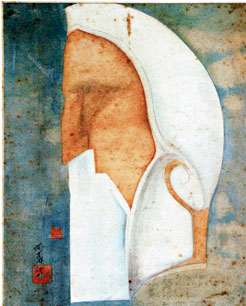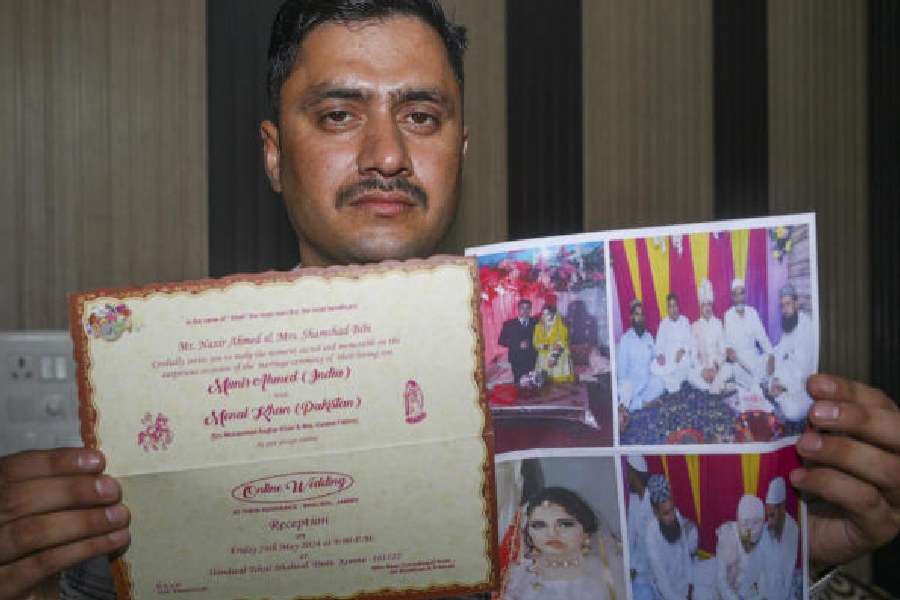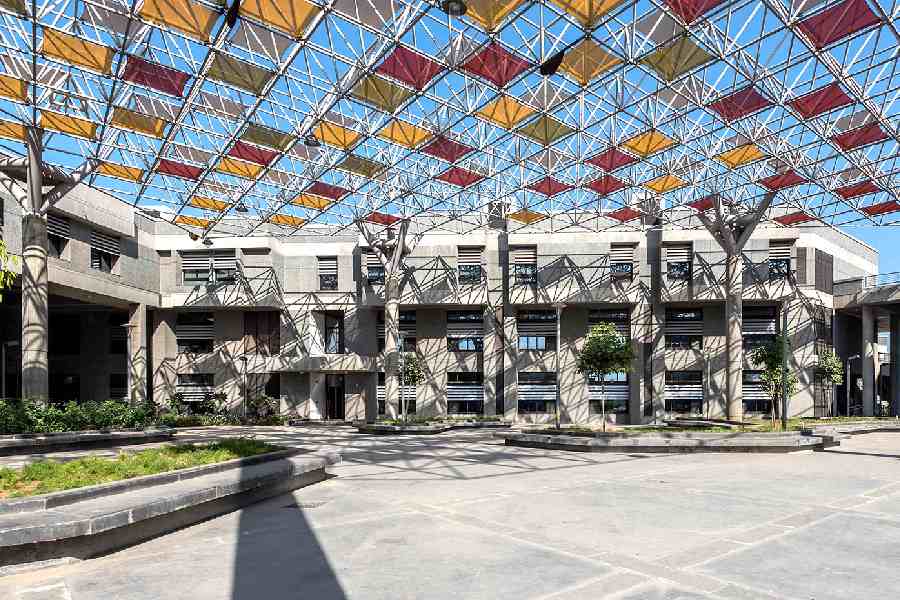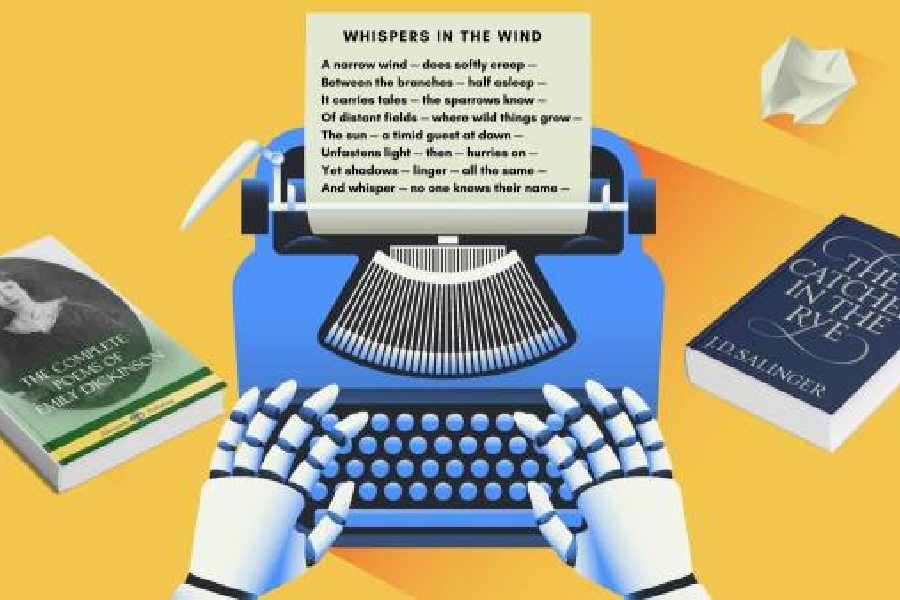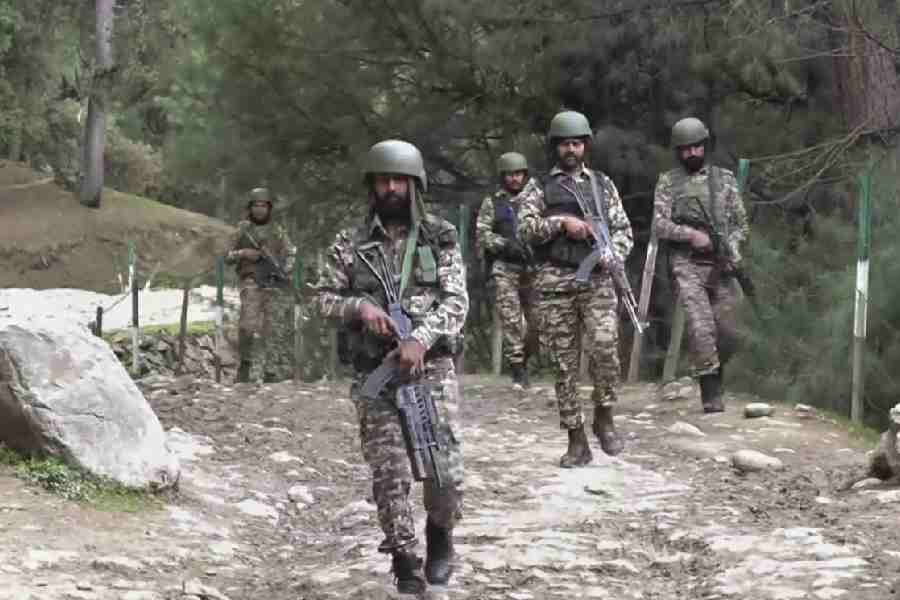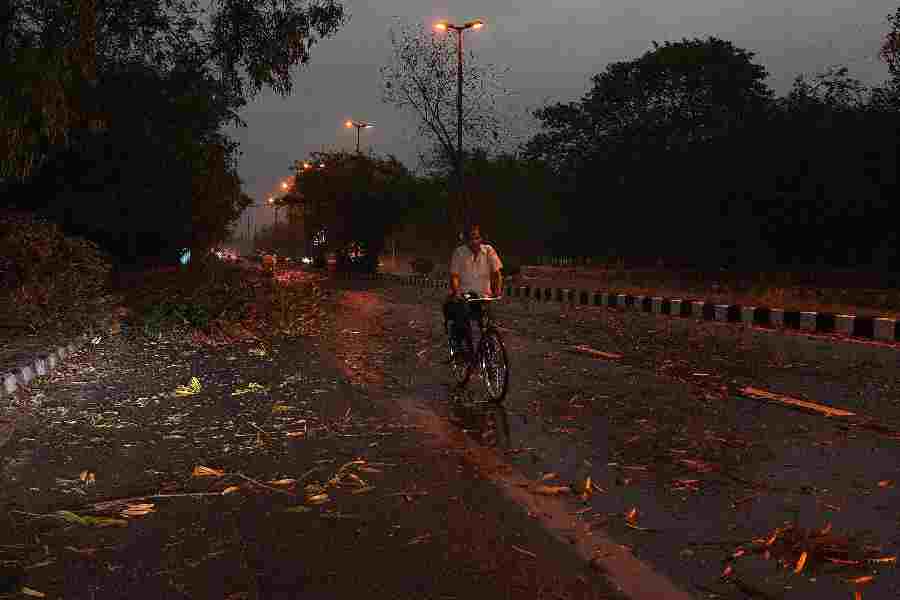 |
 |
| A portrait of Rabindranath from the Mask series by Abanindranath Tagore and (picture above by Sanat Kumar Sinha) Ranjan Parimoo |
Legend has it that Abanindranath Tagore was wiping away tears as he drew the Death of Rabindranath and his tears blended with the paint. But there is no trace of the two works, much like many of the master’s other paintings.
Art historian Ratan Parimoo was in the city last week to select paintings of Abanindranath for an exhibition scheduled for February-March 2014 at Victoria Memorial. Around 120-130 items were chosen from the combined collections of Victoria Memorial Hall and Rabindra Bharati Society.
“We think we know everything about Abanindranath Tagore but we don’t. No one even has a complete, verified catalogue of his works and their present location. These are national treasures, yet no one knows!” said Parimoo, the director of the LD Museum and NC Mehta Gallery in Ahmedabad.
“No one really knows where they (Death of Rabindranath) are now. Only colour plates are available,” Parimoo said.
“Abanindranath is not just a revivalist; he was one of India’s first modernists. He painted most of his life right from his pre-teens, so there should have been a huge legacy but there isn’t. Be it Rabindra Bhavan of Santiniketan, the Indian Museum, the Rabindra Bharati Society or the Victoria Memorial Hall, we can trace only a few hundred. What happened to the rest? I had wanted to present a show that would be representative of his entire oeuvre but I still am not sure what we have.”
The Victoria Memorial collection, according to Parimoo, is from the artist’s early years. “Some are minor sketches, conte drawings, pencil drawings of rural scenes and landscapes. One or two are really good and skilful but they all belong to 1890-1900, before Abanindranath came into contact with Havell and Okakura or was inspired by Nivedita and Vivekananda. This was the time he was taking training in Western art from Italian artist Gilhardi and Charles L. Palmer. This training, I feel, gave his style a strength missing in some of the others who followed him,” he said.
The Rabindra Bharati Society has many of his later and better-known works like the Passing of Shah Jahan, one of the few oils by Abanindranath, the Krishna Leela Series which portrays a roguish Krishna and gopis in boats, a couple from the Omar Khayyam series, the Arabian Nights series, and of course the Bharat-mata which became synonymous with the Independence movement.
“Some of the works are damaged. The mounting process had been faulty and now reddish spots and black marks appear where the acid in the paper has worked on the fine water colour washes. In some, the colours look a little faded. Expert handling will be needed and ideally all the works should be conserved, not just the ones selected for the show,” Parimoo said.

